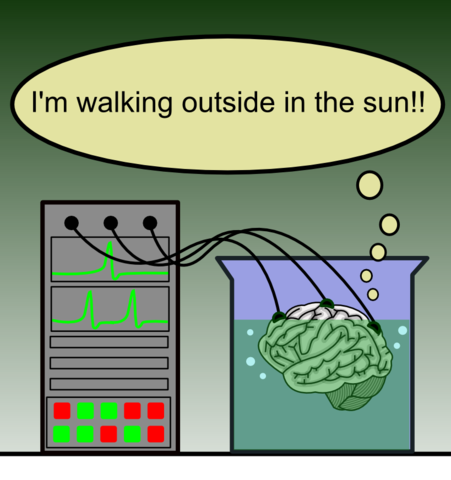# Exploring Organoid Intelligence: Are We on the Brink of a New Era?
Written on
Chapter 1: The Concept of Brains in Vats
The concept of a "brain in a vat" is a renowned philosophical thought experiment, first introduced in its contemporary form by Gilbert Harman in 1973. While it draws parallels to Descartes’ evil demon and Zhuangzi’s dreaming butterfly, the essence remains: a brain is placed within a vat, its sensory experiences entirely dictated by a computer. This scenario raises profound questions about reality, perception, and knowledge, as the brain cannot differentiate between real and simulated experiences.
However, we do not actually have brains suspended in vats—what about in Petri dishes?
Organoids are sophisticated cell cultures that replicate certain functions of an organ. Originating from stem cells, they differentiate into various cell types, enabling them to perform organ-specific tasks. These organoids not only enhance our understanding of organ development but are also utilized for drug testing and other applications. The first brain organoid was developed in 2013, and advancements now allow researchers to create more complex versions, including Neanderthal variants. As organoid technology evolves, the potential for developing intricate 3D bioreactors that foster growth and complexity increases. But how intelligent can these mini brain-like structures truly become?

Chapter 2: The Rise of Organoid Intelligence
As organoids grow larger and more intricate, researchers can more accurately simulate brain processes and diseases. This evolution gives rise to the potential for "organoid intelligence," which could significantly impact biocomputing.
Why Biocomputing?
In recent years, the focus has been primarily on silicon-based AI, but the advantages of using living systems for computation are compelling. Intelligent organoids may offer several benefits:
- Energy Efficiency: Biological systems often require considerably less energy for computational tasks. For instance, a larval zebrafish navigates its environment using just 0.1 microwatts, while a human averages around 100 watts—20% of which is consumed by the brain. In comparison, modern machine learning clusters can consume about 10 watts.
- Learning from Fewer Samples: Living organisms, including humans and honeybees, can learn tasks with remarkably few examples. In contrast, most machine learning models need vast datasets to recognize similar distinctions.
The developing field of organoid intelligence aims to harness these unique biological capabilities.
The Structure of Brain Organoids
Brain organoids are generated from induced pluripotent stem cells (iPSC). While initial research focused on neurons, it has become evident that other cell types, such as astrocytes, oligodendrocytes, and microglia, also play crucial roles in learning. Current brain organoids exhibit spontaneous electrical activity and demonstrate features similar to the EEG patterns of preterm human infants.
While this does not yet equate to true intelligence, researchers are exploring methods to measure and stimulate these organoids using 3D microelectrode arrays (MEAs)—think of them as tiny EEG caps. Although implanting electrodes is technically feasible, it can be invasive and damaging, particularly given the small size of the organoids. The data collected from the MEAs can then be analyzed using machine learning systems.
These systems can function in either an open-loop or closed-loop manner. In an open-loop system, data is fed into the organoids and their responses are measured. Closed-loop systems provide feedback to the neural networks, essentially asking the organoids for their perspectives on the data received.
Ethical Considerations
As organoids become increasingly sophisticated, ethical dilemmas arise. Presently, these brain organoids are significantly smaller than actual brains and lack the complexity necessary for consciousness. However, as they become more advanced, capable of processing information and generating responses, concerns about consciousness and potential suffering could emerge.
In addition to issues of consciousness, privacy for iPSC donors and intellectual property questions must be addressed. Should donors be informed if their health is impacted by the research? Who has ownership of these intelligent organoids?
Ideally, research should advance with ethical considerations at the forefront, ensuring collaboration between ethicists and research teams to navigate these complex issues.
In the end, one might ponder: are we all just brains in vats, lost in a simulated reality?